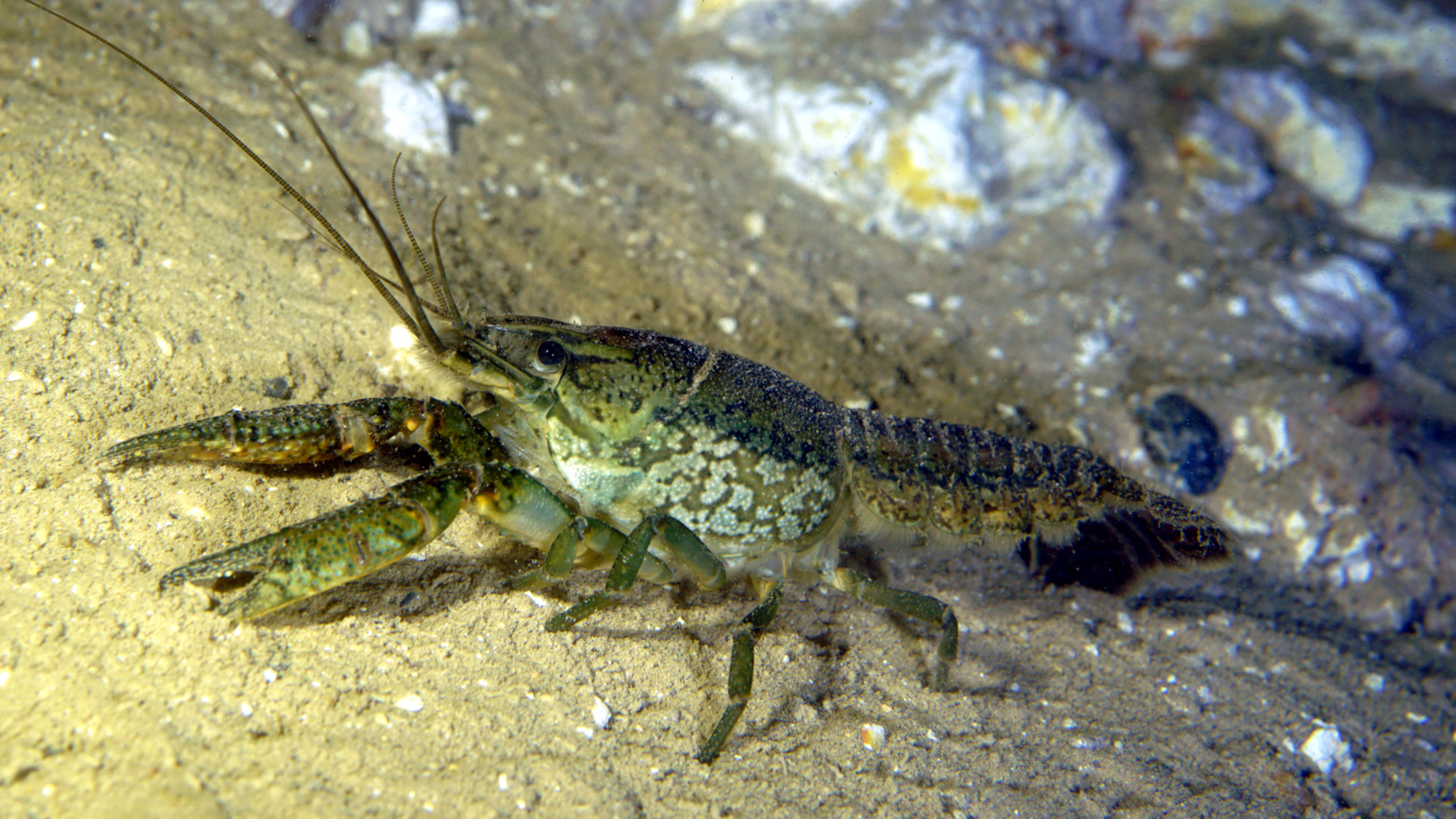What’s the weirdest thing you learned this week? Well, whatever it is, we promise you’ll have an even weirder answer if you listen to PopSci’s hit podcast. The Weirdest Thing I Learned This Week hits Apple, Spotify, YouTube, and everywhere else you listen to podcasts every-other Wednesday morning. It’s your new favorite source for the strangest science-adjacent facts, figures, and Wikipedia spirals the editors of Popular Science can muster. If you like the stories in this post, we guarantee you’ll love the show.
FACT: The future is female self-cloning crayfish. And our only hope to beat them may be eating them.
That’s a slight exaggeration. But the only known decapod crustacean that uses parthenogenesis (self-cloning!) to reproduce is the Marbled Crayfish. All known individuals of this species are genetically identical to a sort of metaphorical Crawfish Eve, who mysteriously emerged in the German pet trade in the 1990s. Since leaving their aquarium Eden, the crustaceans have slowly taken over some European waterways—and even crowded out local species as far away as Madagascar. Many regions, including several U.S. states, have attempted to legally gatekeep these girlbosses in an effort to curtail the coming crayfish clone tide.
And, yes, scientists have seriously been researching harvesting Marbled Crayfish as a sustainable food source for when those containment efforts inevitably fail. One 2021 study even includes pictures of prospective ways to serve what some enterprising Germans have dubbed the “Berlin Lobster.”
These crustacean colonizers were a regular topic of conversation when Rachel joined us as a fellow last spring at MidMountain, an arts and agricultural nonprofit operating from a retreat space in the Blue Ridge Mountains of Virginia. You can come check out our local crawfish—along with lots of other weird and spooky stuff—at MidMountain Fest 2024: Reclaiming Appalachian Murder Ballads on October 12, 2024! It’s going to be a full day of revelatory feminist art, music and storytelling, with dozens of creatives exploring the intersection of gender, horror and history. We’ll have craft workshops, art installations, and eight hours of music across two stages, hosted by MidMountain Retreat at 338 Arnolds Valley Rd, Natural Bridge Station, VA. Tickets (starting at $40), “Murder of Crow” early bird group discounts, backstage passes, and more information are all available at www.midmountain.org/fest. You can also find out more about MidMountain on most social media as @midmtn, including Instagram, Facebook, TikTok, and the former Bird App.
FACT: This vintage dress contained a mysterious code that took the Internet 10 years to solve
Back in 2013, an archaeologist named Sara Rivers Cofield was perusing an antique mall in Maine. She regularly bought old dresses and handbags for fun—a fitting hobby for an archaeologist, if you ask me—and was thrilled to spot a silky brown number from the 1800s for just $100.
Once Rivers Cofield got the dress home and took a closer look, she found lots of features to be excited about. But then she found something surprising: a hidden pocket. Like, so hidden that the wearer would have had to disrobe to access it without ripping their gown. And there was something inside, too: crumpled bits of fragile old paper.
When she first read the seemingly-random collection of words written out on these aged pages, she thought she might be looking at someone’s penmanship exercises. But then she noticed some patterns in the way the words and numbers were formatted. Could this be some kind of code? She posted all the information on her blog in the hopes that someone could tell her.
That kicked off a decade-long effort to decode the so-called Silk Dress Cryptogram. Tune into this week’s episode of The Weirdest Thing I Learned This Week to hear more about the Victorian weather enthusiast who stumped cryptography fans for 10 years—and the whacky telegraph codebooks that finally revealed the contents of her message. Plus: Why her identity is still a major mystery in its own right.
FACT: Lab mice are simply not into dudes
By Amanda Reed
I recently came across a TikTok summarizing a study from Nature Methods titled “Olfactory exposure to males, including men, causes stress and related analgesia in rodents.” In layman’s terms, that translates to: “lab rodents think men are smelly and stressful.”
The team measured the mice and rats’ response to an injection in the ankle, either around different experimenters or while alone in an empty room. The animals showed a 40% decrease in pain response when a man remained in the room. But that’s not all! Being around a shirt worn by a man the previous night, male axillary secretions, and even other male animals had the same effect on the rodents.
The frazzled fellows had elevated blood levels of the stress hormone corticosterone, which softened the little guys’ pain response. Women experimenters did not affect the animals’ pain response. Their presence actually counteracted the response to men, like an antidote to a poison. Cue the Ariana Grande!
